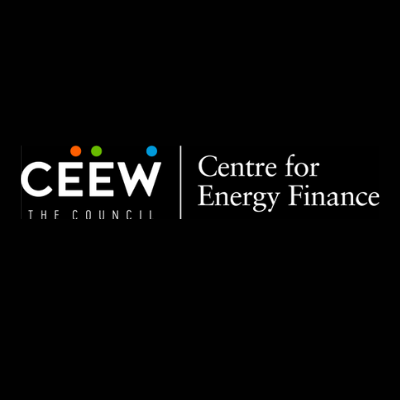- FAVORITES
- News Feed
- EXPLORE
- Pages
- Groups
- Blogs
- Marketplace
- Developers
Total CharKillos
0
- Male
- Followed by 0 people
Recent Updates
- The Future of Captive Power Plants in a Renewable Energy-Driven World
In a renewable energy-driven world, captive power plants are evolving to integrate green technologies like solar, wind, and biomass. Their future lies in enhancing energy self-sufficiency, reducing emissions, and utilizing hybrid models for consistent power. As renewables gain prominence, these plants can act as flexible, decentralized sources supporting cleaner industrial energy transitions.
Visit https://bookmark.youmobs.com/the-future-of-captive-power-plants-in-a-renewable-energy-driven-world/The Future of Captive Power Plants in a Renewable Energy-Driven World In a renewable energy-driven world, captive power plants are evolving to integrate green technologies like solar, wind, and biomass. Their future lies in enhancing energy self-sufficiency, reducing emissions, and utilizing hybrid models for consistent power. As renewables gain prominence, these plants can act as flexible, decentralized sources supporting cleaner industrial energy transitions. Visit https://bookmark.youmobs.com/the-future-of-captive-power-plants-in-a-renewable-energy-driven-world/BOOKMARK.YOUMOBS.COMThe Future of Captive Power Plants in a Renewable Energy-Driven Worlds the world rapidly shifts towards renewable energy sources, the role of captive power plants—those that generate electricity primarily for a […]0 Comments 0 SharesPlease log in to like, share and comment! - Environmental Benefits of Captive Power Plants: Reducing Carbon Footprint
Captive power plants, owned by industries to generate their own electricity, offer environmental benefits by reducing carbon footprints. Utilizing cleaner fuels, waste heat recovery, and renewable energy sources, these plants enhance efficiency and minimize emissions. By generating power onsite, they reduce transmission losses and contribute to greener, more sustainable industrial energy practices.
Visit https://medium.com/@ceewcef/environmental-benefits-of-captive-power-plants-reducing-carbon-footprint-fb42f372e290Environmental Benefits of Captive Power Plants: Reducing Carbon Footprint Captive power plants, owned by industries to generate their own electricity, offer environmental benefits by reducing carbon footprints. Utilizing cleaner fuels, waste heat recovery, and renewable energy sources, these plants enhance efficiency and minimize emissions. By generating power onsite, they reduce transmission losses and contribute to greener, more sustainable industrial energy practices. Visit https://medium.com/@ceewcef/environmental-benefits-of-captive-power-plants-reducing-carbon-footprint-fb42f372e290MEDIUM.COMEnvironmental Benefits of Captive Power Plants: Reducing Carbon FootprintIn the global effort to combat climate change and reduce carbon emissions, various energy sources are being explored for their…0 Comments 0 Shares - Internal Carbon Pricing vs. External Carbon Pricing: Key Differences
Internal carbon pricing is a voluntary strategy where companies set a cost on their carbon emissions to drive sustainable practices internally. External carbon pricing, however, is imposed by governments through mechanisms like carbon taxes or emissions trading systems. While internal pricing is self-driven for strategic planning, external pricing enforces broader market-level emission reductions.
Visit https://ceewcef.bcz.com/2024/11/12/internal-carbon-pricing-vs-external-carbon-pricing-key-differences/Internal Carbon Pricing vs. External Carbon Pricing: Key Differences Internal carbon pricing is a voluntary strategy where companies set a cost on their carbon emissions to drive sustainable practices internally. External carbon pricing, however, is imposed by governments through mechanisms like carbon taxes or emissions trading systems. While internal pricing is self-driven for strategic planning, external pricing enforces broader market-level emission reductions. Visit https://ceewcef.bcz.com/2024/11/12/internal-carbon-pricing-vs-external-carbon-pricing-key-differences/0 Comments 0 Shares - Internal Carbon Pricing and Its Role in Reducing Greenhouse Gas Emissions
Internal carbon pricing involves assigning a monetary value to carbon emissions within an organization to drive low-carbon investment decisions. By making emissions more costly, businesses are incentivized to adopt cleaner technologies, enhance efficiency, and reduce their carbon footprint. This proactive approach aligns corporate practices with climate goals, ultimately helping to lower global greenhouse gas emissions.
Visit https://www.bpublic.com/articles/internal-carbon-pricing-and-its-role-in-reducing-greenhouse-gas-emissions
Internal Carbon Pricing and Its Role in Reducing Greenhouse Gas Emissions Internal carbon pricing involves assigning a monetary value to carbon emissions within an organization to drive low-carbon investment decisions. By making emissions more costly, businesses are incentivized to adopt cleaner technologies, enhance efficiency, and reduce their carbon footprint. This proactive approach aligns corporate practices with climate goals, ultimately helping to lower global greenhouse gas emissions. Visit https://www.bpublic.com/articles/internal-carbon-pricing-and-its-role-in-reducing-greenhouse-gas-emissionsWWW.BPUBLIC.COMInternal Carbon Pricing and Its Role in Reducing Greenhouse Gas EmissionsCommunity Article posted by CEEW-CEF about Internal Carbon Pricing and Its Role in Reducing Greenhouse Gas Emissions on bPUBLIC.0 Comments 0 Shares - The Connection Between Renewable Purchase Obligation (RPO) and Carbon Emissions Reduction
Renewable Purchase Obligation (RPO) plays a critical role in reducing carbon emissions by compelling power distributors to procure a portion of energy from renewable sources. By shifting reliance from fossil fuels to wind, solar, and other green options, RPO directly lowers greenhouse gas emissions, advancing India's climate goals and sustainable development.
Visit https://www.timessquarereporter.com/technology/the-connection-between-renewable-purchase-obligation--rpo--and-carbon-emissions-reduction
The Connection Between Renewable Purchase Obligation (RPO) and Carbon Emissions Reduction Renewable Purchase Obligation (RPO) plays a critical role in reducing carbon emissions by compelling power distributors to procure a portion of energy from renewable sources. By shifting reliance from fossil fuels to wind, solar, and other green options, RPO directly lowers greenhouse gas emissions, advancing India's climate goals and sustainable development. Visit https://www.timessquarereporter.com/technology/the-connection-between-renewable-purchase-obligation--rpo--and-carbon-emissions-reductionWWW.TIMESSQUAREREPORTER.COMThe Connection Between Renewable Purchase Obligation (RPO) and Carbon Emissions Reduction | Times Square ReporterExplore how Renewable Purchase Obligations (RPO) drive carbon emissions reduction by promoting clean energy adoption and supporting global climate goa...0 Comments 0 Shares - How Renewable Purchase Obligation (RPO) is Shaping the Future of Renewable Energy in India?
Renewable Purchase Obligation (RPO) mandates Indian power distributors and large consumers to source a specified percentage of their energy from renewable sources. This policy accelerates renewable energy adoption, reduces carbon emissions, and drives investments in wind and solar projects. By enforcing compliance, RPO shapes India's sustainable energy future and combats climate change.
Visit https://ceewcef.livepositively.com/how-renewable-purchase-obligation-rpo-is-shaping-the-future-of-renewable-energy-in-india/How Renewable Purchase Obligation (RPO) is Shaping the Future of Renewable Energy in India? Renewable Purchase Obligation (RPO) mandates Indian power distributors and large consumers to source a specified percentage of their energy from renewable sources. This policy accelerates renewable energy adoption, reduces carbon emissions, and drives investments in wind and solar projects. By enforcing compliance, RPO shapes India's sustainable energy future and combats climate change. Visit https://ceewcef.livepositively.com/how-renewable-purchase-obligation-rpo-is-shaping-the-future-of-renewable-energy-in-india/CEEWCEF.LIVEPOSITIVELY.COMHow Renewable Purchase Obligation (RPO) is Shaping the Future of Renewable Energy in India?India's energy landscape is transforming rapidly, with the country on a mission to increase the share of renewable energy in its overall energy mix. A crucial0 Comments 0 Shares - How Renewable Purchase Obligation (RPO) is Shaping the Future of Renewable Energy in India?
Renewable Purchase Obligation (RPO) mandates Indian power distributors and large consumers to source a specified percentage of their energy from renewable sources. This policy accelerates renewable energy adoption, reduces carbon emissions, and drives investments in wind and solar projects. By enforcing compliance, RPO shapes India's sustainable energy future and combats climate change.
Visit https://ceewcef.livepositively.com/how-renewable-purchase-obligation-rpo-is-shaping-the-future-of-renewable-energy-in-india/
How Renewable Purchase Obligation (RPO) is Shaping the Future of Renewable Energy in India? Renewable Purchase Obligation (RPO) mandates Indian power distributors and large consumers to source a specified percentage of their energy from renewable sources. This policy accelerates renewable energy adoption, reduces carbon emissions, and drives investments in wind and solar projects. By enforcing compliance, RPO shapes India's sustainable energy future and combats climate change. Visit https://ceewcef.livepositively.com/how-renewable-purchase-obligation-rpo-is-shaping-the-future-of-renewable-energy-in-india/CEEWCEF.LIVEPOSITIVELY.COMHow Renewable Purchase Obligation (RPO) is Shaping the Future of Renewable Energy in India?India's energy landscape is transforming rapidly, with the country on a mission to increase the share of renewable energy in its overall energy mix. A crucial0 Comments 0 Shares - Wholesale power market in India
Wholesale markets play a pivotal role in the electricity trading ecosystem, enabling the buying and selling of electricity before it's delivered to end consumers. This trading ensures a stable power system by effectively balancing demand and supply, making it essential for maintaining efficiency and reliability in energy distribution.
visit
https://www.ceew.in/cef/quick-reads/explains/wholesale-power-market-in-indiaWholesale power market in India Wholesale markets play a pivotal role in the electricity trading ecosystem, enabling the buying and selling of electricity before it's delivered to end consumers. This trading ensures a stable power system by effectively balancing demand and supply, making it essential for maintaining efficiency and reliability in energy distribution. visit https://www.ceew.in/cef/quick-reads/explains/wholesale-power-market-in-indiaWWW.CEEW.INWholesale power market in India | CEF ExplainsWholesale power market in India0 Comments 0 Shares - Deviation settlement mechanism (DSM) and its impact
To maintain grid stability, forecasting and scheduling renewable energy is crucial due to its intermittent nature. Since 2017, state electricity regulatory commissions have implemented the Deviation Settlement Mechanism (DSM) to penalize developers for deviations beyond a certain threshold (typically +/- 15%) from their forecasted generation.
visit
https://www.ceew.in/cef/quick-reads/explains/deviation-settlement-mechanism-dsm-and-its-impactDeviation settlement mechanism (DSM) and its impact To maintain grid stability, forecasting and scheduling renewable energy is crucial due to its intermittent nature. Since 2017, state electricity regulatory commissions have implemented the Deviation Settlement Mechanism (DSM) to penalize developers for deviations beyond a certain threshold (typically +/- 15%) from their forecasted generation. visit https://www.ceew.in/cef/quick-reads/explains/deviation-settlement-mechanism-dsm-and-its-impactWWW.CEEW.INDeviation settlement mechanism (DSM) and its impact | CEF ExplainsDeviation settlement mechanism (DSM) and its impact0 Comments 0 Shares - Difference between gross metering and net metering
Advancements in solar technology and declining prices have made it easier for consumers to install rooftop solar systems. These systems are often connected to the grid to manage surplus and deficit energy. Two common arrangements are gross and net metering.
visit https://www.ceew.in/cef/quick-reads/explains/difference-between-gross-metering-and-net-metering
Difference between gross metering and net metering Advancements in solar technology and declining prices have made it easier for consumers to install rooftop solar systems. These systems are often connected to the grid to manage surplus and deficit energy. Two common arrangements are gross and net metering. visit https://www.ceew.in/cef/quick-reads/explains/difference-between-gross-metering-and-net-meteringWWW.CEEW.INDifference between gross metering and net metering | CEF ExplainsDifference between gross metering and net metering0 Comments 0 Shares
More Stories

